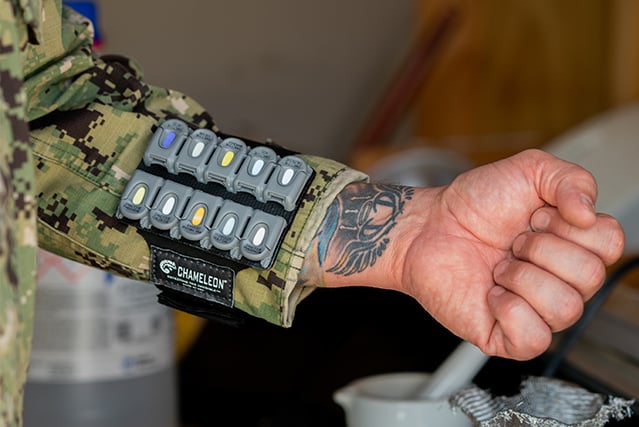It’s only a few minutes since you’ve sat down, coffee in hand, and reading that stack of reports looming on your desk when a call comes in. Five rail cars have derailed. These aren’t just any rail cars, but filled with chemicals. You have a hundred questions… What’s the chemical? Is it leaking? Are there civilians near the site? Where is HazMat? … And then the answers come in. The tanks contain a compound called vinyl chloride and it is contained but the tanks are under pressure and still an explosive risk. It’s been confirmed there are neighborhoods nearby and the decision was made to either evacuate or shelter residents in place due to the possible danger. By now you’ve been given the rundown on Vinyl Chloride -it breaks down to phosgene and hydrochloric acid- both detrimental with the looming threat of those explosive tanks. You don’t know a lot about hazmat but you remember that phosgene was a chemical warfare agent in World War I and II.
Your mind is racing, “Are my officers and my community safe?”
Now, a couple of weeks later, the gravity of what may have been, creeps in. You took a look at the Chemical Safety Board Website where a list of incidents relating to dangerous chemicals is kept. Between December 23, 2022 and January 23, 2023 there were 18 accidental release events at manufacturing facilities around the US not including traffic or rail incidents involving chemicals. You then learn that the U.S. DOT Pipeline and Hazardous Materials Safety Administration (PHMSA) estimates that there are more than 800,000 hazmat shipments every day, and more than 3.1 billion tons are transported each year. In 2017, the U.S. DOT PHMSA reported a total of 3,391 incidents of hazmat spills during transit. These incidents resulted in two hospitalizations, six fatalities and $32,806,352 in damages. That same year, there were 431 incidents that occurred while hazardous materials were in transit by train. These incidents resulted in no fatalities and $19,214,653 in damages.
Now you can’t stop wondering, thinking to yourself, “Are we as prepared as we could be?”
You’ve concluded that the next step in this situation is looking into chemical detection. So you search and come up with results that send you into a frenzy. Most results prompt thoughts like, “I can’t afford this” or “I need to hire a PhD to operate these things.” We have so many trains and trucks running through our town but we don’t have the budget to afford this!”. You need something easy to use, low cost and rugged.
The solution? Chameleon.
It is low cost, easy to use and rugged having originally been developed for the military. Chameleon can detect 10 different chemicals at the same time and it is simple to use. See one color on the cassette? Good. Two? You have detected a chemical presence. Designed to be worn in the rain, snow, or even dunked in water, the Chameleon works in even the harshest of conditions to protect you. It has been tested by the US Army and Navy and can be stored for up to 2 years – because you never know when disaster might strike.
Check out our website and the Chameleon for more products, videos, and news!

